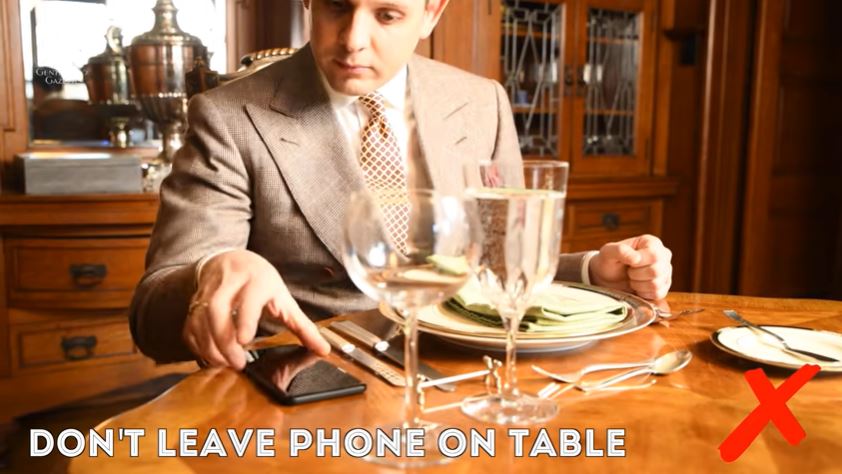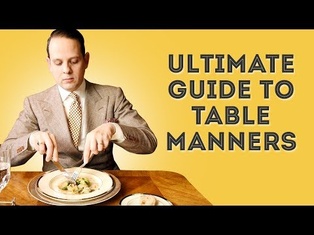Filters
Table Manners - Ultimate How-To Guide To Proper Dining Etiquette For Adults & Children
00:00 Introduction
00:23 Table manners are actually something your parents taught you but are actually far more important as an adult. First of all, your table manners speak volumes about your refinement and it's often interpreted as a sign of character. It's not at all about being snobby or showing off but much rather show respect, your host and your dining partners will greatly appreciate your manners.
It's very important to keep in mind, proper table manners aways help you and never hurt you. The good thing is they can be learned and its never too late to do so.
So what are table manners?
02:31 I suggest you turn your cell phone ringer off when you enter someone else's home and put your phone in your pocket when you're with the guests. Don't leave your phone on the table because you are much more likely to pick it up and look at it which is impolite In the presence of other people.
02:46 If the table is all set, you don't just walk in and sit down. Wait to be seated or wait for the queue of the host, or if they sit, you can sit as well.
02:56 Ideally, want to sit up straight but comfortably, don't slouch, or cross your arms, or sit as you would on your couch while watching a football game.
03:07 Don't expect to sit next to your partner and follow the lead of the hosts. Traditionally, couples were always mixed up to sit with different people.
03:23 If there's a napkin on the plate or next to a plate, put it on your lap right away. If the host or hostess wants to say grace, accept the gesture for what it is, and move along.
03:39 Two, let's take a look at the place setting. In the Western world, an informal place will always have at least a plate, a knife, and a fork. If dessert will be served, you'll find either a little fork or a spoon on the top side of the plate. If soup is served or anything else that requires a spoon, you will also have a spoon. On the top right of the plate, you'll likely find a water glass which is always filled and a wine glass which is empty, to begin with. Sometimes you also find beer glasses; if you prefer that, if that's what's served with a meal. If you see little plate with an extra knife on a top left to your plate, that's for bread and butter. When you're done with the course, you place the fork and a knife at a four to five o'clock angle that means you're done.
05:26 Three, now it's time to serve the food. Most informal dinners are family-style meaning there are bowls or platters where food is served from. For formal dinners, courses are usually plated but we talk about the intricacies of that in our formal dining etiquette video here.
With bowls and anything at the table, the cardinal rule is, don't reach over anybody else and don't touch them. To start, pass the bowl around the table from the left to the right when you get the bowl you hold it and you serve yourself then you pass it on to your neighbor on the right. Always use the serving utensils and never your silverware that's on your place setting. Of course, if the host or hostess has a different idea, go with what they do.
06:57 Four, finally it's time to eat. You should only start eating when everyone else has been served and a host or hostess starts to take their fork and take the lead. It is very impolite and sometimes even rude to just dig into your plate of food while the others are still empty-handed.
16:46 Outfit Rundown

YouTube allows users to upload, view, rate, share, add to playlists, report, comment on videos, and subscribe to other users. It offers a wide variety of user-generated and corporate media videos. Available content includes video clips, TV show clips, music videos, short and documentary films, audio recordings, movie trailers, live streams, and other content such as video blogging, short original videos, and educational videos. Most content on YouTube is uploaded by individuals, but media corporations including CBS, the BBC, Vevo, and Hulu offer some of their material via YouTube as part of the YouTube partnership program. Unregistered users can only watch (but not upload) videos on the site, while registered users are also permitted to upload an unlimited number of videos and add comments to videos.




